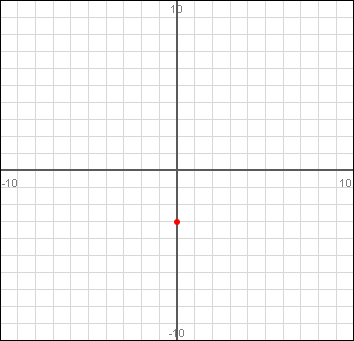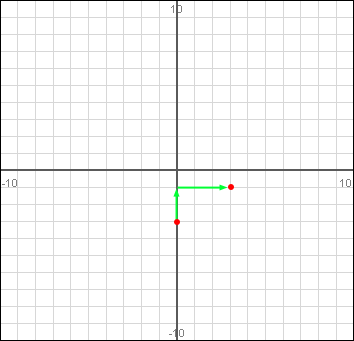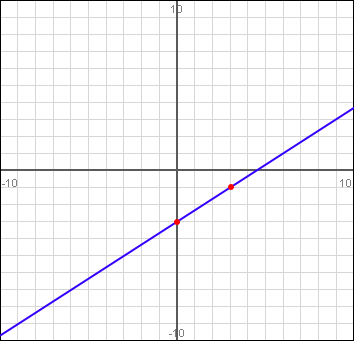| |||
| Math Central | Quandaries & Queries |
|
Question from Paula, a parent: |
Hi Paula.
2x-3y=9 is not a point, it is a line which represents a function.
I think when the question says "find the function for y" it means to convert the equation into the form y = mx + b. Here, m and b are numbers. So it means the same thing as "solve for y". You don't have to have the equation represented as a function of y in order to plot it, but it sure makes things easy. So your assumption is probably correct and your son is meant to use the y = mx + b form to plot the line.
So the first step is to convert the equation to that form:
2x - 3y = 9
-2x + 2x - 3y = -2x + 9 subtracting 2x from both sides
-3y = -2x + 9 simplify
(-3y) / (-3) = (-2x + 9) / (-3) dividing both sides by -3
y = (2/3)x - 3. simplified.
So the equivalent form in y = mx + b form is y = (2/3)x - 3. m is the slope, and b is the y intercept.
So to plot the line on a graph, you start at the y intercept. The y intercept is the point where the line crosses the y (vertical) axis. So that point is (0, b) which in our case is (0, -3).

Next, you use the slope m = 2/3 to find out where to plot another point. The slope is the "rise" over the
"run" which means upwards over rightwards. So for 2/3, you go up 2 units and to the right 3 units and put down another point for the line:

Now that you have two points, you can use a ruler to just draw the line through the two points to finish the graph:

Cheers,
Stephen La Rocque.
 |
||
Math Central is supported by the University of Regina and The Pacific Institute for the Mathematical Sciences.